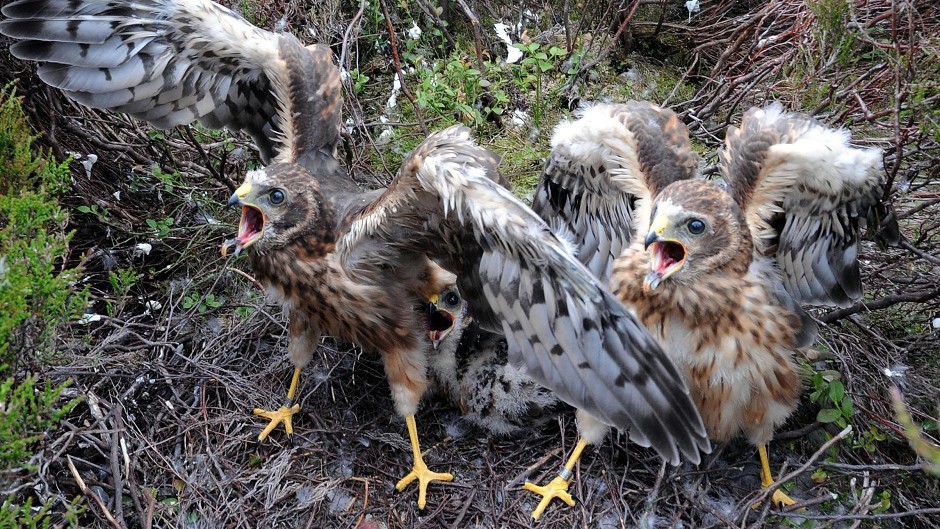A £1.8million project will be launched today to save one of the UK’s most threatened and spectacular birds of prey, the hen harrier.
The RSPB’s Hen Harriers for LIFE project, supported by the EU, is the first ever cross-border initiative to save the rare bird.
The five year project will focus on seven special protection areas (SPAs) designated for breeding hen harriers in southern and eastern Scotland and northern England.
The hen harrier is estimated to be the most persecuted bird of prey in the UK, and features on the red list of endangered species.
There are currently fewer than 500 breeding pairs of hen harrier in the whole of Scotland, mostly on Orkney, the Hebrides and parts of the western mainland.
In England, the species is on the verge of extinction, with only four nests recorded this year.
Blánaid Denman, manager of the Hen Harrier LIFE+ Project, said yesterday: “Hen harriers are in dire straits. Numbers are declining dramatically and urgent action is needed, which is why this European Union-funded project is both welcome and timely.
“The cross-border project provides a huge boost to our efforts to monitor and protect hen harriers.
“Working together with volunteers and other organisations, we’ll have more eyes and ears on the hills than ever before, using satellite tagging, winter roost monitoring and nest protection to deter persecution, identify the important areas for these birds and highlight where they’re most at risk.”
“Building on the success of our award-winning Skydancer Project in England this new project will enable us to share the stories of these remarkable birds with a wider audience than ever before.”
Ms Denman added: “In five years we would hope to achieve a measurable increase in the hen harrier population, and also in levels of understanding and engagement about hen harriers.
“We want to create a landscape where the hen harrier is welcome, and secure a future for them.”
The Scottish SPAs included in the project are at Glen Tanar; Forest of Clunie; Muirkirk and North Lowther Upland; Langholm and Newcastleton Hills; and Glen App and Galloway Moors.
